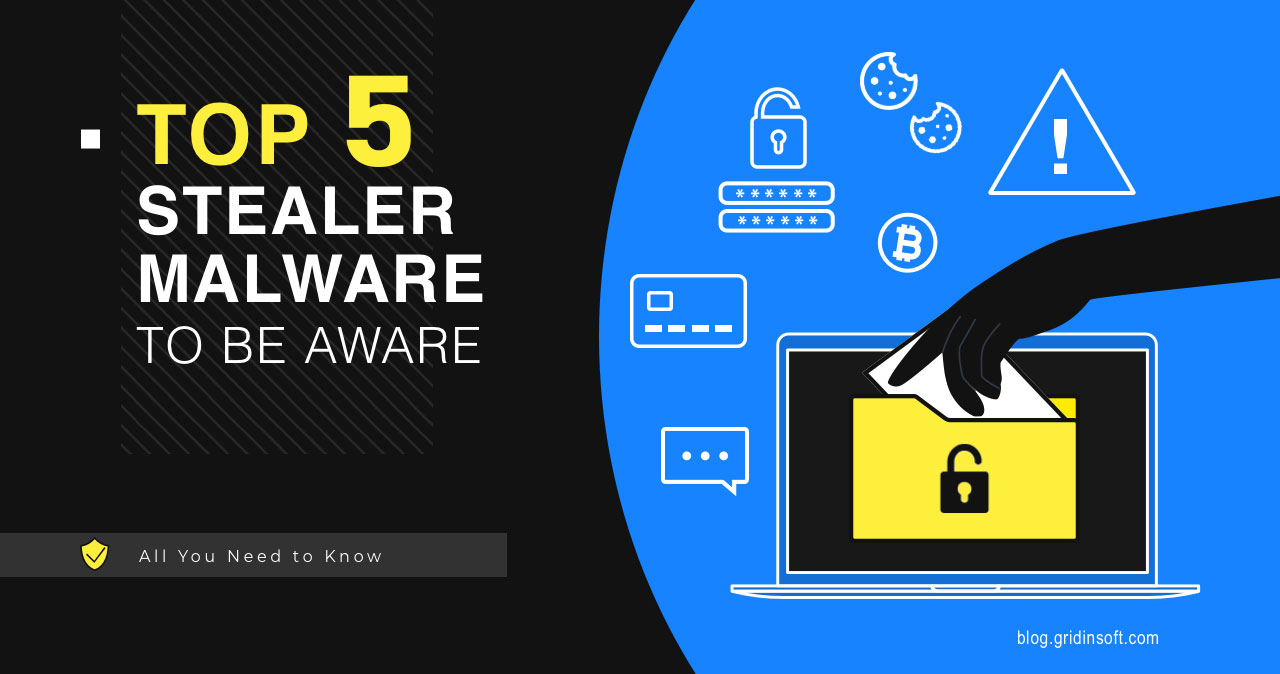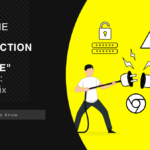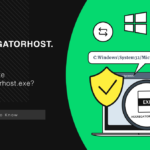Remember when we used to worry about viruses that just crashed your computer? Those were simpler times. In 2025, cybercriminals prefer to steal your data rather than destroy it. Welcome to the golden age of infostealer malware – the digital pickpockets that empty your accounts while you’re busy scrolling through cat videos.
The data tells a striking story: while media headlines scream about ransomware attacks, infostealers quietly dominate the threat landscape, accounting for nearly a quarter of all cybersecurity incidents. This silent majority operates without flashy ransom notes or system lockdowns, making them even more dangerous. As the defensive focus shifts to stopping ransomware, these stealthy data thieves slip through the cracks, reaping massive rewards with far less attention. The trend is clear – attackers have realized that stealing your data offers better ROI than holding it hostage.
What Even Is an Infostealer?
Infostealers are exactly what they sound like – malware designed to quietly extract sensitive information from your device. They target passwords, credit card details, cryptocurrency wallets, browser cookies, and pretty much anything that could be valuable on the digital black market. Think of them as the cybercriminal’s Swiss Army knife – versatile, reliable, and exceedingly popular.
Unlike ransomware’s dramatic hostage-taking approach, infostealers prefer to work in the shadows. They slip in, grab what they want, and often leave without you noticing anything’s wrong. By the time you realize your accounts have been compromised, your data is already being sold on dark web marketplaces or used for follow-up attacks.
Why Infostealers Are Booming in 2025
According to IBM’s X-Force Threat Intelligence Index 2025, credential harvesting now occurs in 29% of all cybersecurity incidents. That’s a massive slice of the cybercrime pie. The Verizon 2025 DBIR found that 54% of ransomware victims had their domains appear in infostealer logs first – meaning these stealers often serve as the appetizer before the main ransomware course.
Cryptocurrency remains a major driver behind infostealer popularity. With traditional banking fraud becoming harder to pull off, crypto wallets represent a softer target with potentially massive payoffs. Plus, the rise of BYOD (Bring Your Own Device) policies has created a perfect storm – personal devices often have both work and personal credentials, making them information goldmines.
The Fab Five: 2025’s Most Notorious Infostealers
Not all infostealers are created equal. Some have risen to the top through a combination of advanced features, reliability, and aggressive marketing on cybercrime forums. Here’s the current leaderboard of data thieves keeping security professionals up at night.
1. Lumma Stealer (LummaC2)
Lumma has climbed to the #1 spot in 2025, a remarkable rise for malware first detected in late 2022. Its success comes from its stealthy approach to data exfiltration – sending information in small fragments to avoid triggering security alerts. The developers offer tiered pricing plans ranging from $250 to $1,000, with premium features like network sniffing functionality reserved for big spenders.
What makes Lumma particularly dangerous is its comprehensive targeting. It captures browser data, cryptocurrency wallets, two-factor authentication apps, email clients, and even Telegram sessions. For cybercriminals willing to shell out $20,000, Lumma’s developers will even provide source code access and reselling rights – talk about customer service.
2. StealC Stealer
StealC has rocketed to second place this year, proving that sometimes the new kid on the block can outshine the veterans. Released in early 2023, StealC combines the best features of other top infostealers with an aggressive development cycle – releasing new features weekly. Unlike many competitors, StealC offers free testing periods and unusually responsive customer support on darknet forums.
Security researchers at Trac Labs noted StealC’s botched v2 release in 2024, but the developers quickly recovered with v2.1, which improved its ability to evade detection while expanding its targeting capabilities. Its growing market share makes it clear that stumbles haven’t impeded its rise to prominence.
3. RedLine Stealer
RedLine has held onto a top-three position since 2020, demonstrating impressive staying power in a fickle malware market. Written in C#, this veteran infostealer excels at grabbing credentials from over 60 browsers, VPN configs, cryptocurrency wallets, and FTP clients. Its relatively user-friendly control panel and reasonable pricing (starting around $150-$200) have maintained its popularity among less technical cybercriminals.
Despite being one of the older contenders, FortiGuard Labs reports that RedLine continues to receive regular updates. Recent versions have improved its ability to bypass Windows Defender and added capabilities to steal gaming accounts – because apparently, your Steam inventory is now worth stealing too.
4. Raccoon Stealer
If infostealers had an old guard, Raccoon would be part of it. Around since 2019, this digital veteran has somehow managed to stay relevant in the ever-changing malware landscape. While newer threats come and go, Raccoon keeps adapting and evolving – kind of like that one friend who somehow stays cool despite getting older.
What’s interesting about Raccoon isn’t just its staying power but how it’s run like an actual business. The developers offer round-the-clock customer support through Telegram (better service than my internet provider, honestly) and roll out updates more consistently than most legitimate software companies. They’ve recently added Telegram Desktop theft capabilities and expanded their crypto wallet targeting – because apparently stealing your Bitcoin wasn’t enough, now they want your obscure altcoins too.
At $275 monthly, it’s not exactly budget-friendly for aspiring cybercriminals, but you get what you pay for. Raccoon has earned its reputation for reliability in the underground markets. Hunt.io researchers recently caught it using fileless infection techniques – basically operating in your computer’s memory without leaving obvious traces on disk. It’s like a burglar who not only doesn’t break your windows but somehow manages to avoid leaving footprints on your carpet.
5. Vidar Stealer
Vidar is what happens when malware developers embrace the “build-your-own-adventure” model. Born as an offshoot of another stealer called Arkei back in 2018, Vidar gives its criminal users a modular, mix-and-match approach to data theft. Want to steal passwords but not cookies? No problem. Need crypto wallets but not browser history? They’ve got you covered.
What makes security pros lose sleep over Vidar is its chameleon-like ability to disappear after doing its dirty work. Once it’s grabbed what it came for, Vidar can completely remove itself from your system – like a thief who not only steals your valuables but also washes the dishes and vacuums before leaving, just to make you question if you’ve been robbed at all.
The U.S. Department of Health and Human Services didn’t mince words when they called Vidar “exceptionally potent.” It’s frequently deployed alongside ransomware like STOP/Djvu in tag-team attacks. The latest versions have even figured out how to steal MFA seed values – those supposedly “unbreakable” second factors protecting your accounts. It’s basically telling your two-factor authentication, “That’s cute, hold my beer.”
Data Targeted by Information Stealers
Source: GridinSoft Research Lab analysis, 2025
The visualization reveals a disturbing truth: modern infostealers don’t just target one type of data—they’re designed for comprehensive digital identity theft. Lumma leads the pack in browser data collection, which shouldn’t surprise anyone considering we practically live in our browsers. Meanwhile, the crypto wallet targeting reflects attackers’ preference for assets that are both valuable and irreversible once stolen. The pattern is clear: these tools are becoming increasingly sophisticated in their ability to extract everything from your digital life worth stealing.
Real-World Impact: When Infostealers Strike
The damage from infostealers extends far beyond individual victims. Major breaches in early 2025 demonstrate their growing threat to organizations of all sizes. Samsung Tickets suffered a massive leak in March when a hacker exploited credentials stolen by an infostealer infection from 2021, exposing 270,000 customer records.
Even more alarming, the HELLCAT ransomware group has made infostealers central to their strategy, successfully breaching Jaguar Land Rover, Telefónica, and several other major companies using stolen credentials from infostealer logs. These incidents highlight how a single compromised device can lead to enterprise-wide breaches months or even years later.
How to Keep Your Data From Being Stolen
Protecting yourself against infostealers doesn’t require a cybersecurity degree. Focus on these essentials:
- Update everything – Patch your system and apps promptly
- Use a password manager – Create unique passwords for every site
- Enable MFA everywhere possible – Preferably using authenticator apps
- Avoid pirated software – That “free” Photoshop is a trojan horse
- Run security software – Choose solutions that detect behavioral anomalies
For more detailed information, check out our comprehensive guide on how to detect, remove, and prevent infostealer infections.
Infostealer Comparison: The 2025 Threat Landscape
| Feature | Lumma | StealC | RedLine | Raccoon | Vidar |
|---|---|---|---|---|---|
| First Appeared | 2022 | 2023 | 2020 | 2019 | 2018 |
| Pricing Model | $250-$1,000 Source code: $20,000 |
$150-$250 Free trial periods |
$150-$200 Flat fee |
$275/month Subscription |
$200-$500 Custom builds |
| Primary Targets | Browsers, wallets, 2FA apps, email clients, Telegram | Browser data, VPN credentials, passwords | 60+ browsers, VPN configs, crypto wallets, FTP clients | Wallets, Telegram data, browser credentials | Customizable targeting based on attacker needs |
| Unique Features | Fragment-based exfiltration that avoids detection | Aggressive weekly update cycle, responsive support | User-friendly control panel, wide-ranging browser support | Fileless infection techniques, 24/7 Telegram support | Self-destruction capability, MFA seed value theft |
| Distribution | Phishing, malvertising, cracked software | Spam email, fake downloads, compromised sites | Forums, torrents, malspam | Malicious ads, cracked software | Phishing, bundled with ransomware |
| Detection Difficulty | Very High | High | Medium | High | Very High |
| Market Share Trend | ↑ Rapidly growing | ↑ Growing | → Stable | → Stable | ↑ Growing |
| Common Pairings | Often precedes ransomware | Used with remote access trojans | Cryptocurrency miners | Additional backdoors | STOP/Djvu ransomware |
The Bottom Line
Here’s the uncomfortable truth that cybersecurity professionals don’t always articulate clearly: in 2025, it’s not a question of if your credentials will be targeted, but when. Infostealers have evolved from crude data-grabbing tools into digital espionage platforms that operate with unsettling efficiency. They’re the silent assassins of the cybersecurity world – no flashy techniques, no dramatic demands, just quiet theft that often goes unnoticed until the damage is done.
The reality is that cybercriminals have realized a fundamental truth about human behavior: we’re creatures of habit and convenience, routinely sacrificing security for simplicity. Password reuse, postponed updates, and clicking without thinking aren’t just bad habits – they’re open invitations to these digital thieves. The brutal economics also can’t be ignored: why would criminals bother with complex ransomware operations when they can extract cryptocurrency wallet contents directly, without the messy negotiations?
The cybersecurity landscape is constantly evolving, but one principle remains stubbornly consistent – attackers will always follow the path of least resistance to valuable data. By implementing even some of the protection measures outlined above, you’re essentially making yourself a harder target. In the digital wilderness, you don’t need to outrun the bear – you just need to outrun the other hikers. Make your digital presence secure enough that attackers look for easier pickings elsewhere, and you’ve won half the battle.
Want to stay protected without a computer science degree? Gridinsoft Anti-Malware today and let us handle the technical heavy lifting while you get back to whatever you were doing before you started worrying about digital pickpockets.





